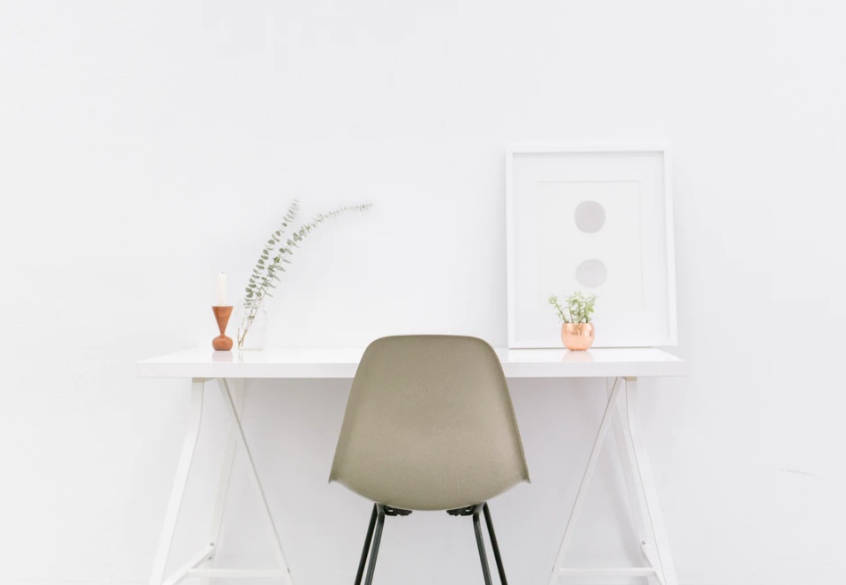Whether we are discussing it in the contexts of art, music, interior design or fashion, the act of pursuing minimalism is, in the overwhelming majority of instances, an act of rejection. In other words, the crisp, white lines of a minimalist living room is defined as minimalism by virtue of the absence of noise – bold colour, pattern, all but the starkest of lighting. The imposing, cuboid apparitions Donald Judd are as striking and provoking as they are because of the conspicuous absence of detail, delicacy and visual poetry. We find minimalism between the lines, wherever it manifests.
The online realm is no different, though the impact on the viewer (or, of course, user) is entirely different. With the rise of social media, we were all granted the power to curate and organise our own public content libraries (utilising all the mediums of image, text, video and sound). With the introduction of influential website builders like Wix, the art of website and logo design fell into the hands of the users themselves – those looking to marry brand cohesivity with useability and practicality, as well as internet design trends and a smooth, professional structure. It is this new, professional standard which instigated a major change in DIY website design: a sharp, swift move away from the animation-laden, word-art-heavy, music-playing landing pages and personal blogs of the early 2000s.
It’s no wonder, then, that over time a digital movement toward sleek, minimalist graphic design began to arise in myriad areas of the web. From website design to content creation, online stores to consumer behaviours, many brands have sought to do adopt a stylish rejection of those chaotic, noisy and eye-watering websites emblematic of the early days of the world wide web.
Read more below.
Pairing Down
The internet is cumulative. It takes on (and on, and on, and on) and it never lets anything go. Every post, picture, meme, gif, Tweet and so on is banked up somewhere in the amorphous web, and made more permanent than if it was written in stone.
As a generation, we humans have begun to look for alternatives to clutter. Minimalism is something of an antidote. More so than the mid-century artistic movement it once was, the appeal now lies in minimalism as a lifestyle – a conscious denunciation of ‘clutter’ and excessive noise, whether we are thinking about our homes, our wardrobes, our routines or lives in general. This is why tends toward so called ‘eco minimalism’ are gaining such traction – the same rules apply, though they follow a sustainable, environmentally friendly tilt.
When it comes to the internet – where everything contributes, and nothing takes away – the story is the same.
One of the best examples of this lies in the one-page website – which, as the name suggests, manifests as a single, fluid concept where questions on navigation or content organisation look very different – and all the simpler for it.
According to the World Economic Forum, for instance, one of the best ways to help the planet is to embrace these single page website structures wherever possible. Of course, it won’t always be possible – and brands needn’t consider sacrificing vital pages for the sake of ‘extreme’ minimalism – but, where possible, the ability to do away with unnecessary digital tangents, without sacrificing on design or useability.
A Cohesive Aesthetic
Minimalism is not just a reaction to its antithesis – it is also a stylistic decision that boasts its own unique aesthetic appeal. With it, even the most ubiquitous digital brands can achieve a strong sense of cohesivity.
Just a few years ago, for instance, notable brands began to embrace flatter, more 2D versions of their existing logos en masse. Across social media, Twitter’s emblematic blue bird got a paper cut-out style of makeover. Between 2005 and 2012, Facebook’s logo bore a reflective, almost three-dimensional design; from the mid-2010s until this moment, however, it has been flat.
The same can be said for a near-endless list of examples. Logos that were once bubbly, shiny, bulbous or glossy turned into matte, flat and minimalistic versions of themselves: Microsoft Windows and Pepsi embraced flat logo designs, eschewing all unnecessary colour, and embracing white space.
The result? The ability to jog our memories with two or three colours alone. Now, for many of the world’s leading brands, we need only see a few solid blocks of colour to be reminded of them – a prime example of turning brand recognition into a minimalist exercise, and achieving an even greater sense of ubiquity – both on- and offline.
The internet is a hothouse for passing trends, but it has also given rise to a number of aesthetic and social movements which seem ready to take on the long haul. Digital minimalism, or a clear drive toward paired down design and online spaces, looks ready to represent one of those movements – an antidote to those busier, nosier spaces of the web.




Leave a Reply